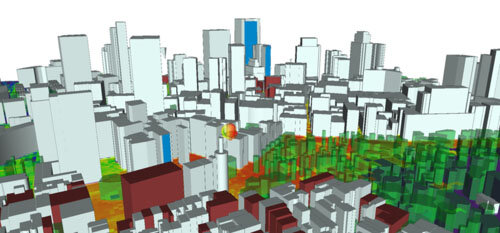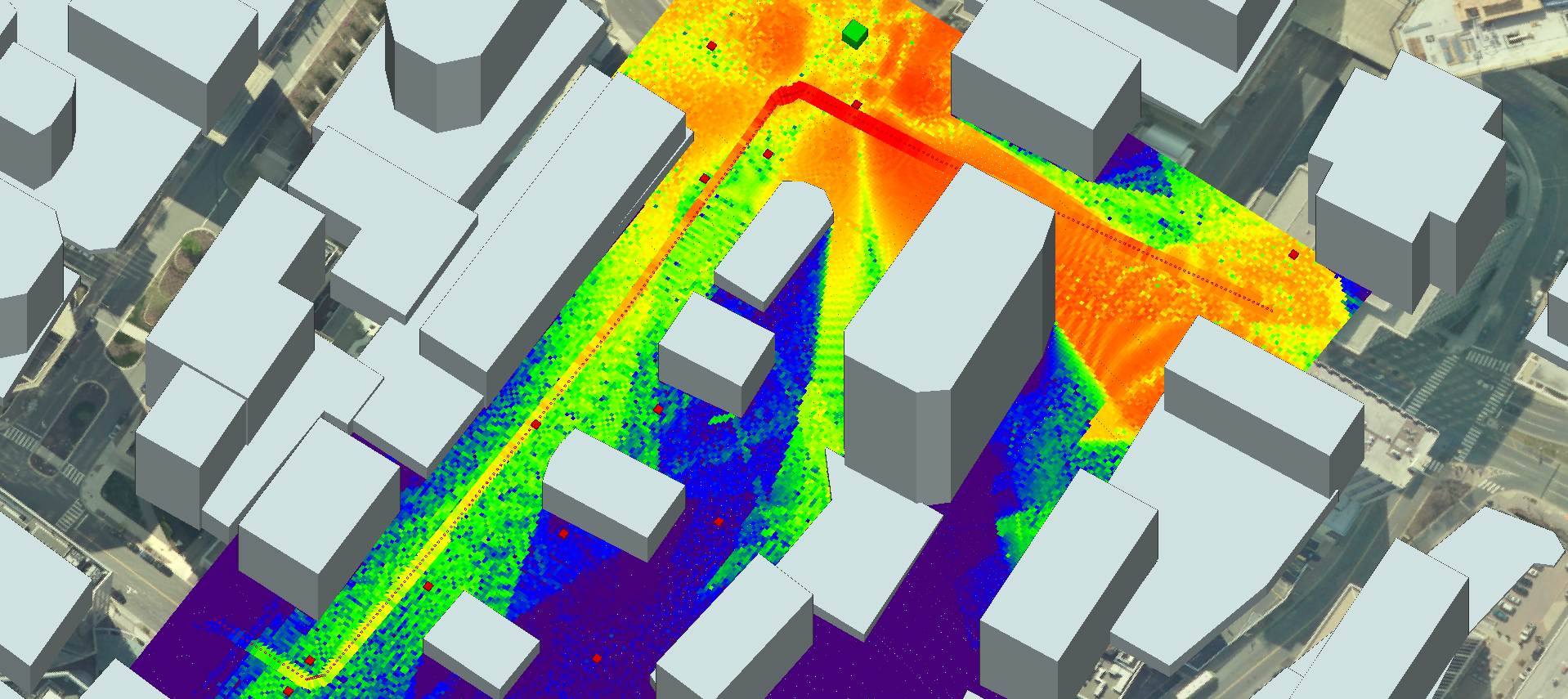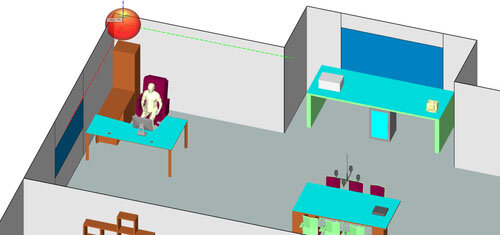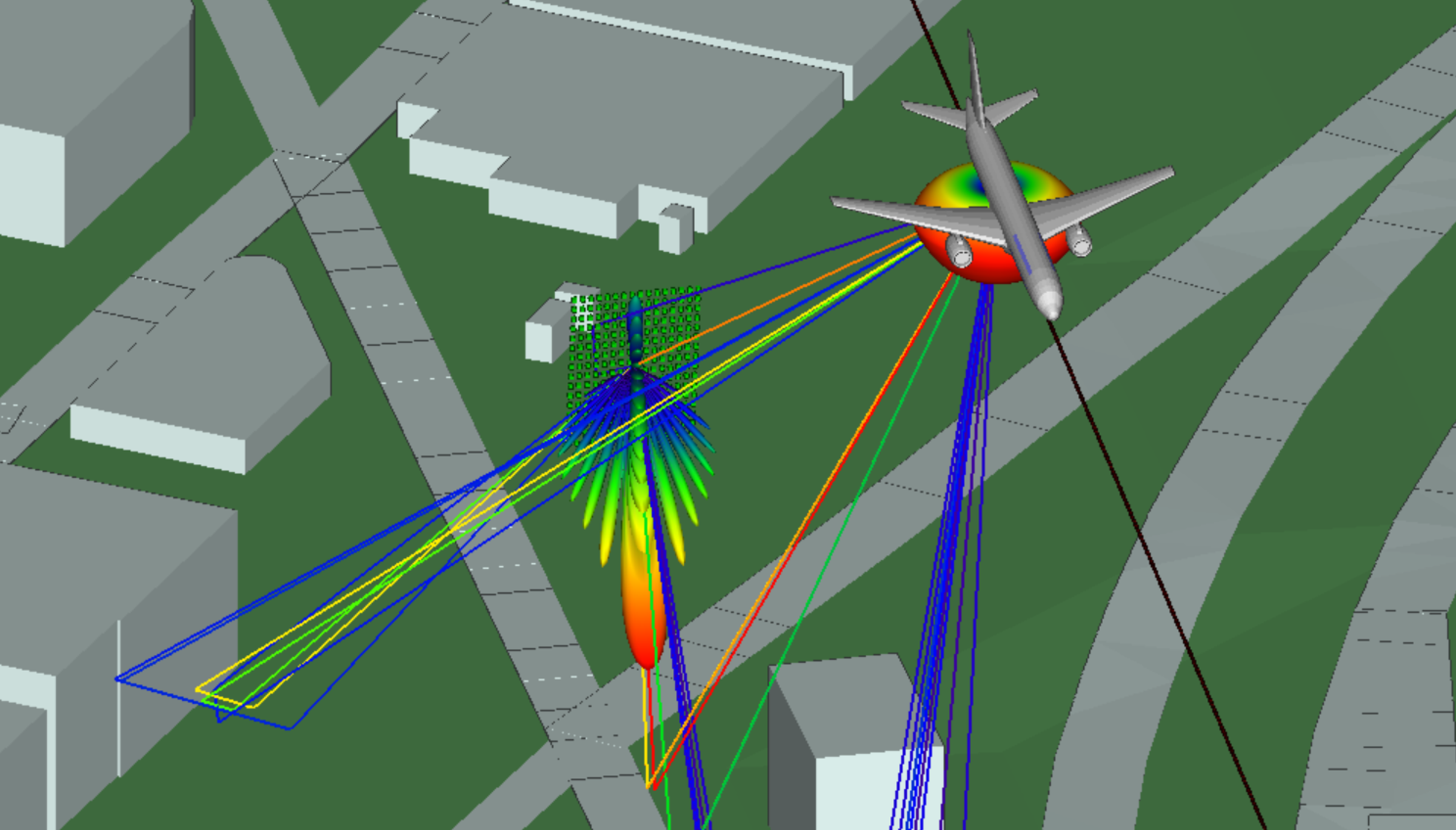Applications
Wireless InSite provides RF engineers with the tools to design wireless links, optimize antenna coverage, and assess key channel and signal characteristics for RF and millimeter wave frequency bands.
Wireless InSite Features
Wireless InSite's unique collection of features gives users the ability to analyze even the most complex and massive propagation problems.
X3D Propagation Model X3D is a 3D propagation model with no restrictions on geometry shape or transmitter/receiver height. This accurate model includes reflections, transmissions and diffractions along with atmospheric absorption and diffuse scattering. Supports frequencies up to 100 GHz.
Antenna Modeling Import measured antenna patterns, simulated antennas from XFdtd, or create textbook antennas for use in SISO, MIMO and Massive MIMO transmitter and receivers. Include frequency-specific pattern data to improve accuracy when using multiple bands or performing frequency sweeps.
MIMO Beamforming & Spatial Multiplexing Simulate MIMO antennas for 5G, WiFi and other technologies. Detailed multipath and mutual coupling effects are used with MIMO techniques such as beamforming, spatial multiplexing, and diversity to predict key channel metrics for one or more MIMO data streams.
Communication Systems Analysis Calculate SINR, throughput, theoretical capacity, and bit error rate (BER) to visualize and assess wireless device performance.
Materials Define electrical properties down to the facet level. The installed materials database includes metal, earth, concrete, brick, wood, glass, etc. at various frequencies.
Engineered Electromagnetic Surfaces (EES) Model an EES or single configuration of a metasurface-based Reconfigurable Intelligent Surface (RIS), and evaluate how it modifies the propagation environment to improve connectivity.
Diffuse Scattering Capture effects of scattering on complex impulse response and received power (including cross-polarization) for mmWave applications.
Feature Import Support for KMZ, COLLADA, SHP, and DXF formats for building and object import. The Geospatial Abstraction Library is used for terrain import in DTED, DEM, and TIFF formats.
Geometry Caching Wireless InSite’s X3D Propagation Model automatically caches processed geometry for later use, avoiding geometry processing time when multiple concurrent or subsequent jobs are run with the same geometry.
Fast Ray-Based Methods 2D site-specific propagation models designed for urban and long-range rough terrain applications.
Empirical Propagation Models Suite of empirical models designed for urban and indoor analysis.
Outputs Users have quick access to outputs such as received power, propagation paths, path loss etc. These ASCII-based files can be plotted in the tool or easily post-processed externally.
Learning and Documentation
Application Examples


























